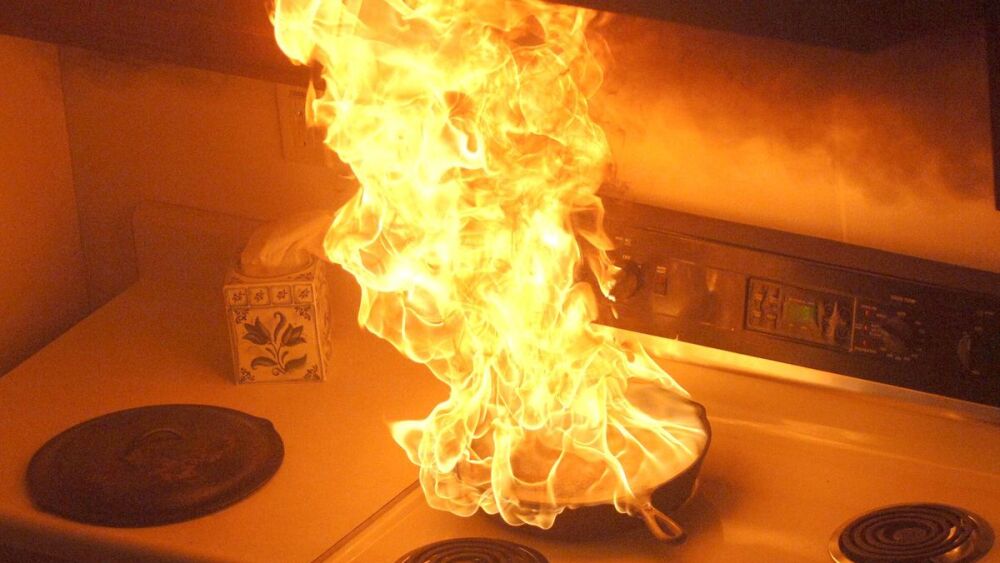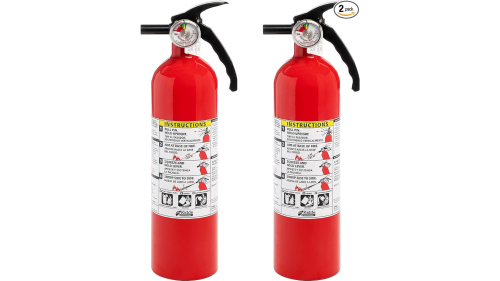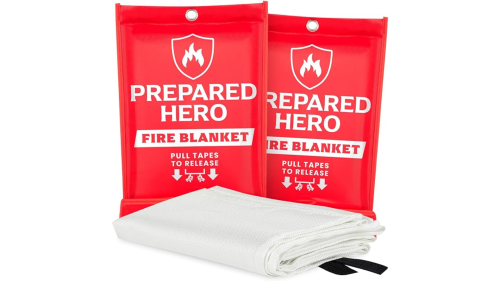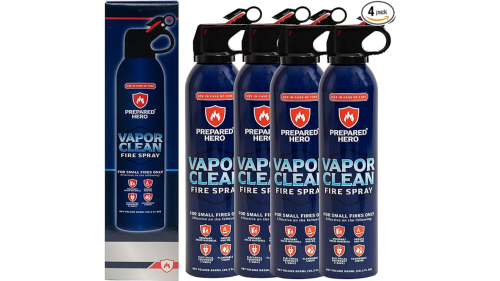Editor’s Note: Thank you to Plano Fire Department Capt. Peggy Harrell for her contributions to this article.
By Shelbie Watts
It starts with a sizzle — but it can end in disaster. Kitchen fires are the leading cause of home fires and fire injuries in the United States, often igniting in a matter of seconds when cooking is left unattended. Grease, high heat, and flammable materials create a perfect storm for fast-moving, hard-to-control blazes. According to the NFPA, U.S. fire departments responded to an average of 158,400 home cooking fires per year between 2017 and 2021. These incidents caused hundreds of deaths, thousands of injuries, and over a billion dollars in property damage, underscoring the critical need for vigilance where we cook and gather most.
In an effort to keep your community safe, Plano Fire Department Capt. Peggy Harrell provided some tips on what residents should (and shouldn’t) do to prevent bad information and “fight or flight” instincts from creating a serious problem. Here’s her advice for how to put out a kitchen fire.
How to put out an oven fire
You can handle flames that erupt in your oven in three easy steps:
- Keep the door closed.
- Turn off the appliance (unplug it if you can).
- Let the fire burn out in the enclosed space.
Remember, no peeking!
The same advice can be applied to microwave fires.
“The fire went out because it ate up all the oxygen in the space, so we don’t want to open the door and feed it any more oxygen,” Harrell said.
How to put out a stovetop fire
According to Harrell, just a little thought and action before you turn the heat on can prevent a stovetop disaster.
“When you’re selecting the pot or pan you’ll be using to cook on your stovetop, also pull out the lid to the pot or pan, or a cookie sheet that is large enough to completely cover the pot or pan,” she said.
If a fire starts, grab a lid or cookie sheet and cover up the flames until they smother out.
Again, no peeking!
How to put out an oil or grease fire
Harrell said people often experience an “adrenaline dump” when a kitchen fire occurs, so they try to move the pan or pot to the sink or outside. Instead of making panicked moves, try these options:
- Cover the flames with a metal lid or cookie sheet. Leave the cover on until it has cooled.
- Turn off the heat source.
- If it’s small and manageable, pour baking soda or salt on it to smother the flames.
- Spray the fire with a Class B dry chemical fire extinguisher.
What type of fire extinguisher do I need for a kitchen fire?
The best type of kitchen fire extinguisher is a Class K extinguisher. Here’s why:
- They are specifically designed for cooking fires involving grease, oils, and fats, which are common in both home and commercial kitchens.
- They use a wet chemical agent that cools the flames and creates a soapy layer that smothers the fire and prevents re-ignition.
While not ideal for grease fires, a multi-purpose Class ABC extinguisher can handle:
- Class A: Ordinary combustibles (wood, paper)
- Class B: Flammable liquids
- Class C: Electrical equipment
Note: If you don’t have a Class K extinguisher, a Class B or ABC extinguisher is better than nothing, but be cautious with grease fires, as improper use can spread the fire.
Important Safety Tip: Never use water on a grease fire—it can cause the fire to explode and spread.
Kitchen fires: When to call for help
“If a fire does occur while cooking, fighting it may not be the best plan of action,” Harrell said.
Ask yourself these questions to determine if you need to call 911:
- How large is the initial fire?
- How fast is the fire growing?
- What is feeding the fire?
- Will anything in the proximity of the fire feed it?
- Is anyone in the home that depends on you to evacuate?
“If any of these factors are in play and make the extinguishing part of the fire unrealistic or dangerous, just move quickly to call 911, alert others to get out, and assist those who need your help out,” Harrell said.
Tips to prevent a kitchen fire
While these tactics are great, prevention is the best approach. Follow these simple tips to avoid a kitchen fire from ever igniting:
- Never leave cooking unattended: Stay in the kitchen when frying, grilling or broiling—if you need to leave, turn off the burner.
- Keep flammable items away from the stove: Dish towels, paper towels, oven mitts and packaging can ignite in seconds.
- Clean up grease buildup: Regularly wipe down your stovetop, oven and hood to prevent flare-ups.
- Use a timer and stay alert: Timers help you stay on track, especially when baking or simmering.
- Turn pot handles inward: This prevents accidental spills and keeps hot cookware out of reach of kids.
- Don’t overheat cooking oil: Heat it slowly and watch closely—smoking oil is a warning sign.
- Have a lid ready to smother flames: If a grease fire starts, cover the pan and turn off the heat—never use water.
- Use appliances safely: Avoid overloading outlets and unplug small appliances when not in use.
- Install and test smoke alarms: Place them near the kitchen, test monthly and change batteries annually.
- Keep a fire extinguisher handy: Store a Class K or ABC extinguisher nearby and know how to use it.
Additional kitchen fire resources
This article, originally published in November 2017, has been updated.








